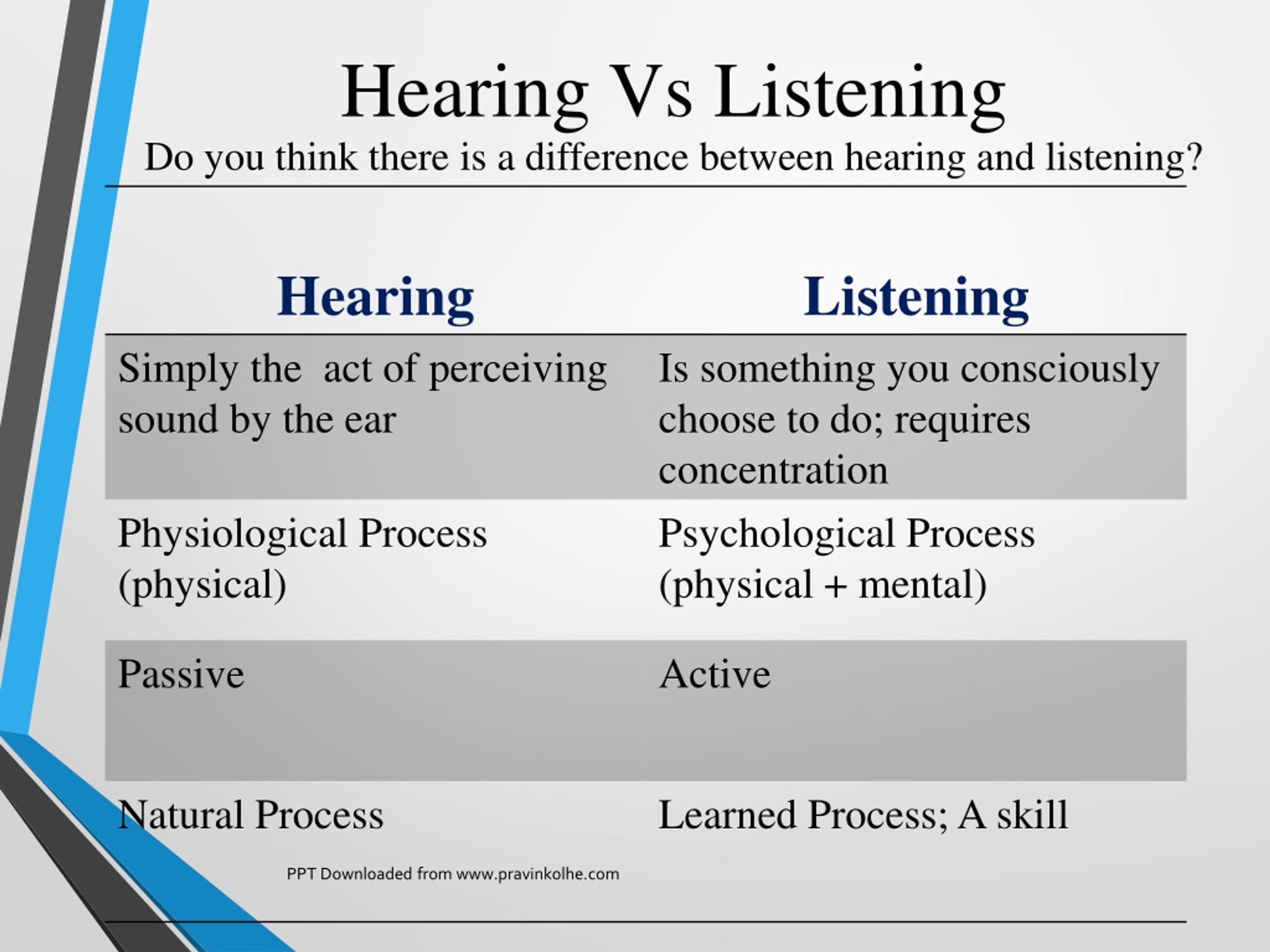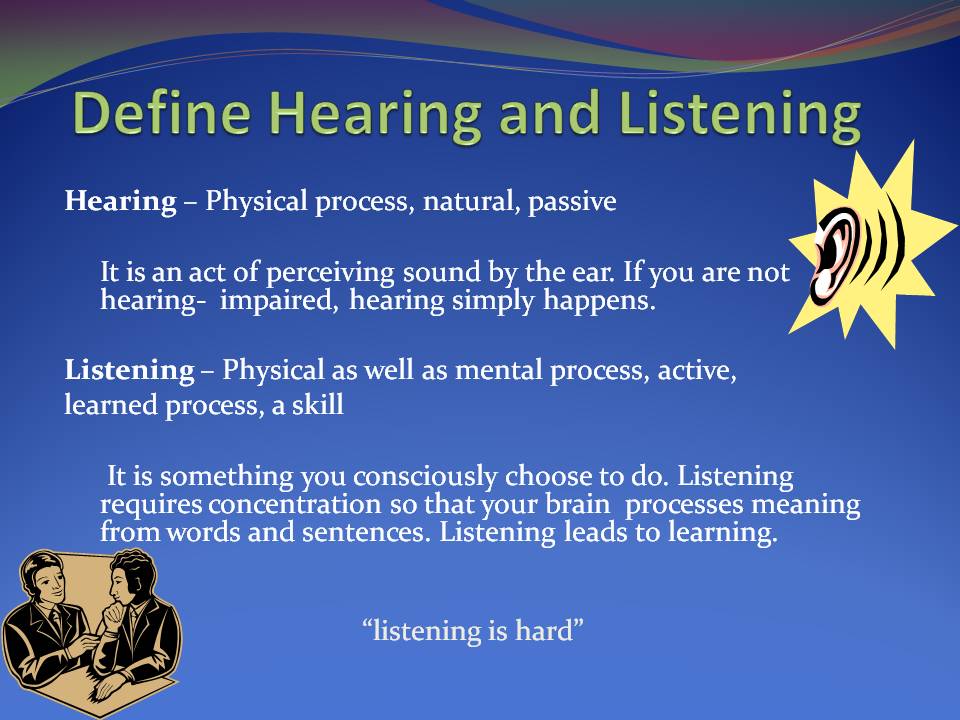
Reading CuesĪctive listening means that we are also very conscious of the non-verbal aspects of the conversation. Are they disgusted and angry or in love and excited? Perhaps they are ambivalent! These are all feelings that you can reply to in your part of the conversation. Responding to the speaker’s feelings adds an extra dimension of listening.
Listening vs hearing full#
The content (the words spoken) is one thing, but the way that people feel really gives full value to the message. Is the speaker happy, angry, excited, sad…or something else entirely? Responding to Feelings When we make a decision to listen for total meaning, we listen for the content of what is being said as well as the attitude behind what is being said. Active listening can be described as an attitude that leads to listening for shared understanding. This is not the same as hearing, which is a physical process, where sound enters the eardrum and messages are passed to the brain. It includes letting the speaker know that we are listening and that we have understood what was said. What is Active Listening?Īctive listening means that we try to understand things from the speaker’s point of view. Take some time to analyze your recent interactions and ask yourself, "Have I listened this week?"įorbes Human Resources Council is an invitation-only organization for HR executives across all industries.Strong management skills and good leadership qualities shine when we actively listen to people, letting them know that what they are saying is important and worthwhile. The more engaged you are during a conversation, the better your listening skills are and the more others will enjoy communicating with you. Once given the opportunity, respond and observe the other person's listening skills. Nodding, smiling and adding small comments will alert your listener that you care about the conversation and that you are interested in providing feedback.Įngagement does not mean that you have to agree with your listener, but that you hear their point of view. People feel heard and understood when their listeners maintain healthy eye contact and offer responses in the form of non-verbal cues.

To provide full engagement, you must use your eyes, body and ears. As mentioned, listening requires engagement. If you are now questioning your listening skills, don't worry because there are a few simple things that you can do to improve your skills. Even if the responses shared are “I don’t know” or “Can I get back to you on that?” every conversation should provide insight to the parties involved. If you spoke to someone and no new information was given or received, something is likely wrong.

After engaging in conversation, take a few seconds or minutes to self-reflect on what was said. You probably aren’t listening if you can only remember the main idea but cannot remember details of the conversation.You probably aren’t listening if you are multi-tasking - texting, checking emails, listening to music and reading can all be distractions when trying to effectively listen to others.So you're probably asking yourself right now, “How do I know if I am listening?” Listening requires engagement and may require follow-up questions for full clarity and visibility. Listening requires the willingness to focus and the act of providing your full attention. You process all information presented to you and you are able to make a conscious decision that you can support.

When you are listening, you are consciously choosing what you want to hear. Effective listening requires you to control what your mind focuses on and responds to.

This may also leave them feeling ignored. And employees may feel undervalued and frustrated if every time they are talking to someone, their words don't seem to resonate with the receiver. Hearing is easy! You cannot control what your ears catch.


 0 kommentar(er)
0 kommentar(er)
